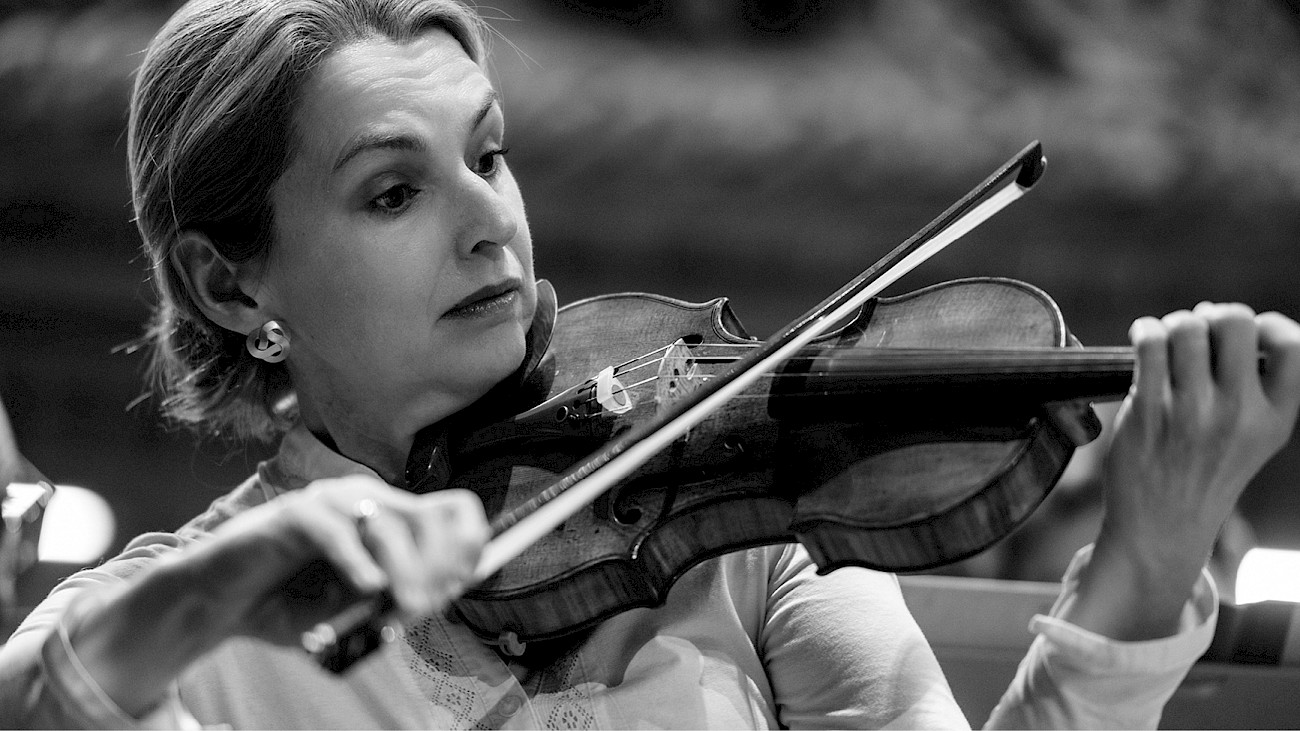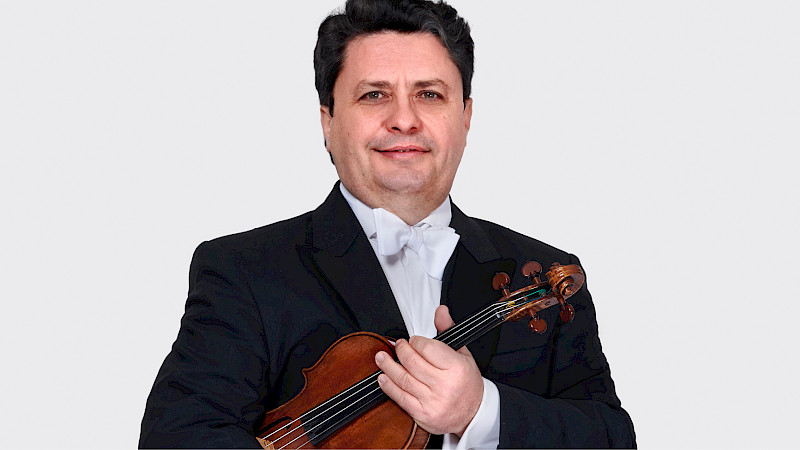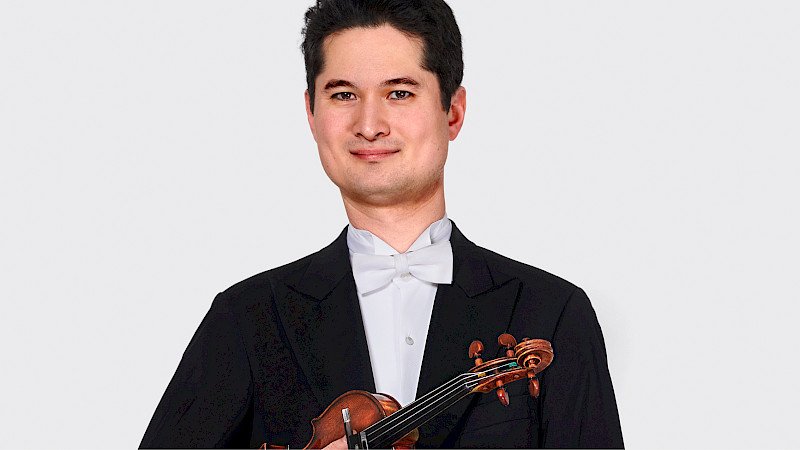
The bow makes the music
It is the dream of many violinists to play a Stradivarius or Guarneri. But it's often the right bow that sparks the magic - as our concertmaster Julia Becker knows.
When it comes to valuable instruments, it's easy to think of master violins. One of the most expensive violins is the "Lady Blunt" Stradivarius, which was auctioned off in London in 2011 at a charity auction for Japan's earthquake victims for 9.8 million pounds sterling (approx. CHF 11 million). It is probably only topped by the Guarneri "Vieuxtemps", which achieved a price of 16 million US dollars (approx. 14.6 million CHF) in 2012.
A master bow for a master violin
Admittedly, violin bows made by master violin makers are not in such financial spheres. And yet you can easily pay CHF 20,000, 50,000 or 100,000 for an old master bow. The current record for a Tourte bow is 570,000 euros (approx. 535,000 CHF). If you consider what an average bow costs, that is a considerable range.
Much more important, however, is the idea that a good bow can elicit an instrument's true voice. Or, to put it even more pointedly, in the words of violin virtuoso Giovanni Battista Viotti (1755-1824): "Le violon, c'est l'archêt" - "The violin, that is the bow". On the one hand, this referred to the playing technique, as Viotti characterised modern violin playing. On the other hand, however, he was also referring to the instrument's accessories, which often receive less attention. Viotti provided valuable advice for a veritable revolution: the unmistakable bows of the French bow maker François Xavier Tourte (1748-1835) heralded a new era and are still a role model today. It is not without reason that he is also known as the "Stradivarius of the bow".
The French master bows
At the time Tourte was born, around 1750, the specialised craft that he himself was to perfect was developing: The craft of bow making separated from the craft of violin making. His father and brother were already master bow makers. François Xavier Tourte's first works still show their influence; for example, the sticks were still round, but from 1805 they were characteristically octagonal and made of pernambuco wood. He also introduced innovations that later proved to be idealised.
His pupil Jean-Baptiste Vuillaume (1798-1875), for example, documented that the tapering of the cross-section of the bow stick corresponds to mathematical laws. Above all, this gives the bow enormous elasticity. Tourte gave the ebony frog its present form, as well as the horsehair covering - previously bundled, it has since been distributed evenly and more widely as a ribbon. In addition, the dimensions of his bows, in terms of overall length and the distance between the cover and stick, proved to be ideal for the technical demands of playing. Tourte's originals, but also those of the French school around and after Vuillaume, are correspondingly sought-after: Peccatte, Simon, Lamy Père and Voirin are well-known names when it comes to bows.
The secret
Our concertmaster Julia Becker plays a Tourte bow - on loan. The fact that she can still use it is a happy coincidence, as she explains: "This bow belonged to the Stradivarius that I played for 20 years. I had to give up the violin about six years ago, but I was allowed to keep the bow. And I remember exactly how my violin maker Markus Ramsauer said at the time: 'I would be relieved if I were you! Because giving up the bow would have been a much bigger step than the violin That's true! Because a bow like that either fits a hand or it doesn't. And I really have the feeling that this bow suits me perfectly."
But what exactly does that mean? What is the secret of such a bow? In conversation with Julia Becker, it becomes clear that in her case it is its versatility. And that it fits the repertoire of a symphony orchestra like the Tonhalle-Orchester Zürich perfectly: "I like this incredible flexibility. I'm very happy that I don't have to change the bow for different works from different eras. And I love the differentiation I can achieve, depending on whether I use a lot of bow or a little. With a Mozart concerto, I can bring out the filigree, but then with Tchaikovsky or Bruckner I can also achieve a really fat sound. This is particularly noticeable with the spiccato. I have a really good grip on the string."
Master bow or carbon fibre?
The logical conclusion would be: a bow that can do everything is always in use. But Julia Becker had doubts, especially at the beginning: she would certainly not play such a valuable bow in the orchestra. Far too bad. "At some point, I did start using it in the orchestra. I now play it exclusively. Unless it has lost too much hair. Then I actually use my spare bow."
So it exists - the spare bow or bows. She has seven of them in total: "Five real ones and two made of carbon fibre." But how can the spare bows exist alongside the superlative bow? Good, says the concertmaster. Because all variants have their justification: "The spare bow that I always have with me is a modern Grünke. I bought it when I played in Bayreuth. That must have been 25 years ago. I paid 5,000 marks for it back then. I feel it much more than, for example, a valuable French bow that I once bought from my father. A fine piece. But it's a bit too fluttery for me."
That leaves the carbon bows. Lightweight, robust, but - soulless? That's the common prejudice. There are two reasons why there are two of them in Julia Becker's equipment: Travelling and contemporary music. With both, the risk of breaking the Tourte bow would be too great - be it during transport or through playing instructions: "You can do anything with the carbon bow, scratch it or scrape it with the stick. No problem." When travelling abroad, for example to the USA, the old French bow does not go into the violin case either.
There are also customs and import regulations to consider. Rare materials such as tortoiseshell or ivory, which were used in the past, are tricky; bows have already been broken at customs. Pernambuco is not currently on the list of protected woods, despite proposals to this effect, but one thing is certain: "If I had to play solo on the road, I would find it difficult to decide against the Tourte. I'm already happy when I get it back after stringing. Because I can't really be without it."
We use deepL.com for our translations into English.







